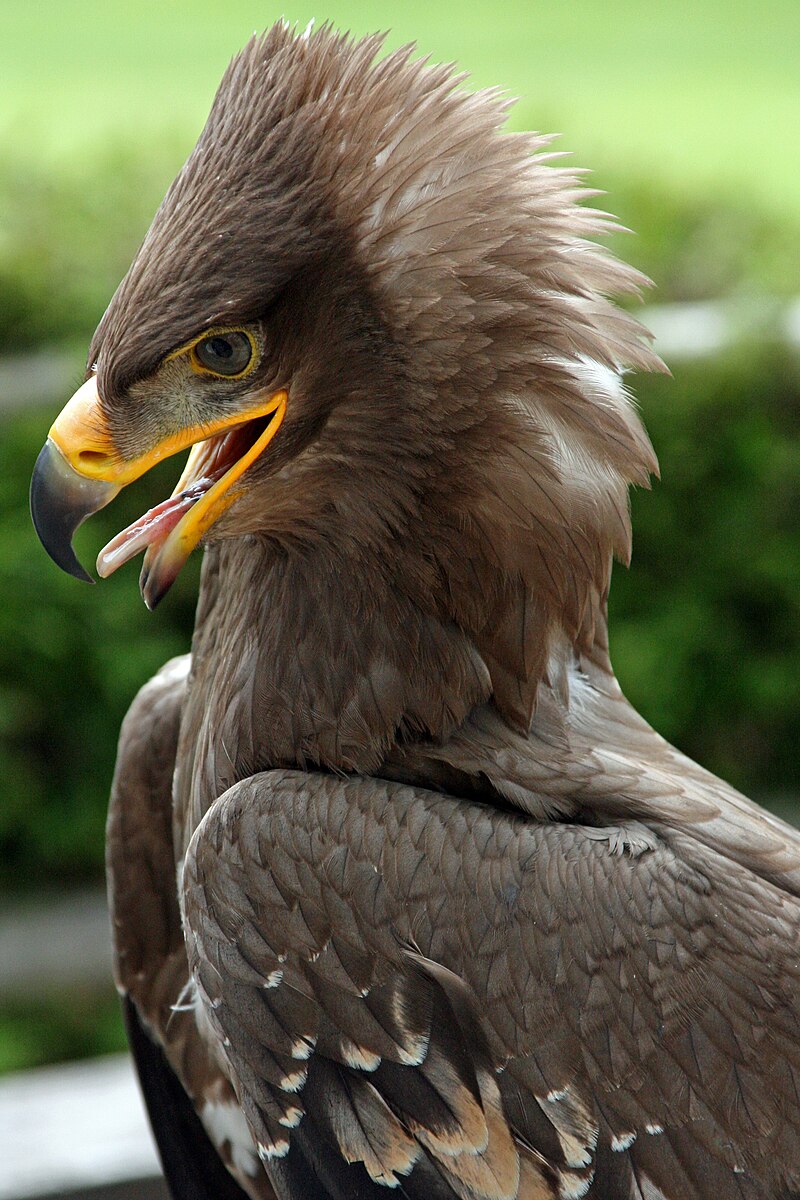There are two types of Steppe Eagles, which were previously considered subspecies but are now considered a monotypical species due to overlapping breeding ranges and clinal variations in size and color.
The Two Types of Steppe Eagles
-
A. n. nipalensis: This subspecies breeds in the eastern portions of the range, including the East Kazakhstan Region and all points east. These birds tend to be larger and heavier than the western eagles, with a more extensive nape patch and a deeper gape-line.
-
A. n. orientalis: This subspecies is found in most of Kazakhstan and European Russia. These birds are slightly smaller and lighter than the eastern population, with a less extensive nape patch and a less conspicuous gape-line.
Recent research has shown that these differences can be explained as clinal variations due to the environment, and the breeding populations of the eastern and western eagles are insufficiently allopatric and too extensively engage in hybridization. Therefore, the Steppe Eagle is now considered a monotypical species.
Physical Characteristics of Steppe Eagles
 Image source: Steppe Eagle by Fimb
Image source: Steppe Eagle by Fimb
Steppe Eagles are large, bulky, and robust-looking eagles that are mainly dark brown in color. They have a longish but very thick neck and a relatively small head with a distinct gape-line. They appear long-winged and have a longish and rather rounded tail with markedly well-feathered (almost with disheveled looking) plumage. Steppe Eagles tend to perch somewhat upright and usually do so in the open, often utilizing isolated trees, posts, rocks, or other suitable low lookouts such as mounds or straw-piles. The species often is seen on the ground where they may stand for long periods of the day and walk with a horizontal posture and with a distinctive gait.
Habitat and Behavior of Steppe Eagles
Steppe Eagles are known to perch on the ground, in trees, and on other suitable low lookouts. They are often seen in open savanna woods, cultivated areas such as wheat stubble fields, dump sites, deserts, and semi-arid areas. In Armenia, they are frequent in old fields and orchards. In south Asia, they usually use open country and often frequent wheat stubble fields and other grassland areas.
Conservation Status of Steppe Eagles
In terms of conservation, the Steppe Eagle is categorized as an Endangered species due to major declines in their populations over the past few decades. This is mainly due to the loss of their steppe habitat, which is being converted into agricultural fields. They also suffer from collisions with power lines and human persecution.
References:
– Steppe Eagle – Thai National Parks
– Steppe eagle – Wikipedia
– Steppe Eagle – The Peregrine Fund

